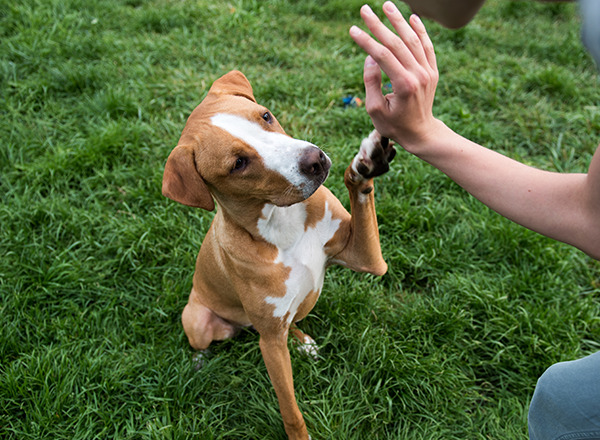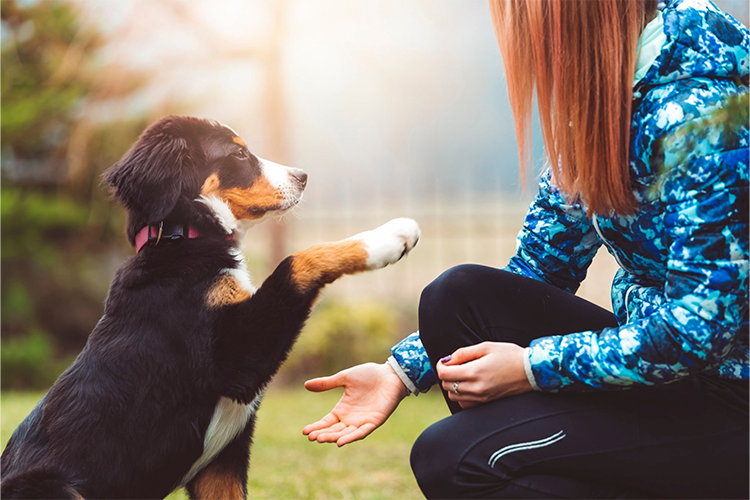The Ultimate Overview to Favorable Support in Dog Training
Important Tips for Successful Dog Training: An Overview for Animal Owners
Efficient pet training is a multifaceted process that requires a calculated technique customized to both the animal's character and the proprietor's purposes. Comprehending exactly how to navigate these obstacles can significantly enhance the training experience, inevitably transforming the relationship in between proprietor and dog.
Understanding Canine Behavior
Recognizing dog habits is crucial for efficient training and cultivating an unified partnership between dogs and their proprietors. dog training. Pets connect mostly via body language, vocalizations, and actions, making it essential for owners to interpret these signals accurately.

Socialization plays a significant function in canine habits; direct exposure to various environments, individuals, and other animals can dramatically affect a pet's personality. Furthermore, factors such as breed attributes and private personality should direct training techniques, as some types may have specific behavioral traits that necessitate tailored strategies. By comprehending these aspects, proprietors can create a helpful setting that encourages positive actions, resulting in successful training end results and a deeper bond with their family pets.
Establishing Constant Commands
Effective communication with your pet starts with developing constant commands. This fundamental aspect of training is crucial for fostering understanding between you and your pet dog. Consistency in the commands you use guarantees that your pet dog can accurately link details words or phrases with the wanted behaviors.
When choosing commands, choose clear, distinctive words that are easy to set apart and claim from each other. Avoid utilizing similar-sounding commands that might confuse your canine. Using "sit" and "remain" is suitable, yet "rest" and "struck" might lead to misunderstandings.
In addition, preserve the exact same tone and volume for each and every command. Pet dogs are delicate to singing hints, so varying your tone can create complication.
It is equally crucial to make sure that all member of the family are on the same web page concerning the commands used. A united front in command use will certainly prevent combined signals and enhance the understanding procedure.
Positive Reinforcement Techniques
The power of positive reinforcement in canine training lies in its ability to motivate preferred habits through incentives and appreciation. This strategy is grounded in the principle that actions adhered to by beneficial end results are most likely to be repeated. By including positive support into your training routine, you can successfully form your pet dog's behavior in a positive fashion.
To implement favorable reinforcement, it's vital to identify what motivates your dog, whether it be deals with, playthings, or verbal appreciation. When your canine executes a wanted action, such as resting on command, instantly compensate them with a treat or love. This organization between the command and the favorable outcome enhances their understanding.
It's vital to timing the incentives properly; supplying the reinforcement within seconds of the desired behavior helps your pet make the link (dog training). Furthermore, uniformity is vital-- make certain that all family participants use the exact same commands and benefit systems to avoid complication

Progressively, you can decrease the frequency of treats as your dog finds out the actions, transitioning to praise or periodic benefits. This method more not only fosters a solid bond between you and your pet dog however additionally promotes a favorable learning environment, making training a satisfying experience for both.
Socialization and Communication
Regularly exposing your canine to a selection of settings, people, and other pets is crucial for their social development. Socialization important source ought to begin early, preferably throughout the critical home window of 3 to 14 weeks, when pups are most responsive to brand-new experiences. Older pet dogs can likewise profit from continuous socializing initiatives.
Introduce your pet to different setups, such as parks, pet-friendly shops, and metropolitan locations. This direct exposure helps them adapt to various stimuli, lowering anxiety and worry feedbacks. Motivate positive interactions with other pet dogs and people, ensuring that these experiences are risk-free and regulated to cultivate confidence.
Make use of structured playdates with courteous pet dogs, as this can improve your pet dog's social abilities and show them appropriate behavior. Obedience classes and training sessions also provide superb chances for socializing, enabling your pet to connect with others in a monitored environment.
Monitor your canine's body language during communications, as this will certainly help you gauge their comfort level. Slowly increase exposure to even more challenging situations while making sure that each experience declares. A well-socialized canine is more probable to show well balanced actions, making them a happiness to have in any type of setting.
Resolving Typical Training Obstacles
Every pet dog proprietor will encounter training difficulties at some time, no matter their dog's age or socializing level. Determining common concerns such as stubbornness, disturbances, and terror can assist in creating effective strategies for improvement.

Distractions throughout training sessions can thwart emphasis. To fight this, begin training in a silent setting with marginal stimulations. Slowly present disturbances as the pet ends up being extra skillful in commands. Short, constant training sessions are likewise efficient in preserving attention.
Terror can impede a pet dog's learning process. Gradual desensitization to the source of worry, matched with positive reinforcement, can help ease stress and anxiety. Persistence is important; never compel a pet into a scenario that causes distress, as this may exacerbate the problem.
Inevitably, understanding and attending to these usual challenges with a structured technique will foster an extra efficient training experience, enhancing the bond between pet and proprietor while promoting efficient discovering.
Final Thought
In recap, effective canine training relies on a comprehensive understanding of canine behavior, the establishment of regular commands, and the application of favorable support techniques. Socializing plays a critical role in creating well-adjusted pet dogs, while resolving typical training challenges needs persistence and adaptability. By executing these important methods, pet dog proprietors can promote a solid bond with their pets and advertise desirable habits, inevitably resulting in an unified relationship between human beings and their canine buddies.
Recognizing dog habits is vital for reliable training and promoting a harmonious connection in between canines and their proprietors.Socialization plays a significant duty in pet actions; exposure to various environments, individuals, and other pets can significantly affect a canine's personality.The power of positive support in dog training lies in its ability to motivate desired habits via incentives and appreciation. By including favorable support into your training regimen, you can properly shape your pet's habits in a positive fashion.
In summary, successful pet training counts on a comprehensive understanding of canine behavior, the establishment of regular commands, and the application of positive reinforcement techniques.